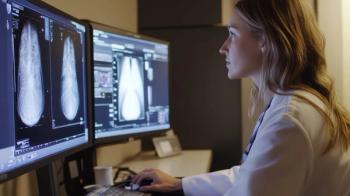
CMS Declines to Expand Coverage of Computed Tomography Colonography (CTC) for Medicare Beneficiaries
Citing “insufficient” evidence, the Centers for Medicare and Medicaid Services (CMS) has declined a formal request by the American College of Radiology and multiple patient advocacy groups to reevaluate the lack of Medicare and Medicaid coverage of computed tomography colonography (CTC) for colorectal cancer screening.
Despite the practical benefits of computed tomography colonography (CTC) for colorectal cancer (CRC) screening and endorsement by multiple organizations, the Centers for Medicare and Medicaid Services will not reassess its lack of coverage for this procedure in CRC screening., according to the American College of Radiology (ACR).1
The ACR and multiple patient advocacy organizations had sent a formal request on April 5 to the CMS in support of Medicare and Medicaid coverage of the non-invasive CTC procedure.2 However, the ACR has noted that the CMS deemed the evidence provided in this request to be “insufficient” for changing its national coverage determination (NCD) for the use of CTC in screening for CRC.1
In light of the CMS decision, here are a few considerations and perspectives voiced earlier this year in regard to the potential impact of CTC in CRC screening.
1. When it comes to CRC, the average age at the time of diagnosis is 68 for men and 72 for women.3
2. Judy Yee, MD, a Professor and University Chair in the Department of Radiology at Montefiore Medical Center and the Albert Einstein College of Medicine, noted that CTC is a viable CRC screening option for patients deemed to be at high risk for anesthesia or sedation, patients who are on anticoagulation therapy, or frail and elderly patients with multiple comorbidities.4
3. “(CTC) is a very safe screening test with at least a 10 to 20 times lower perforation risk compared to colonoscopy. It also doesn’t typically cause any significant infections or bleeding.” – Dr. Yee 4
4. In a video interview earlier this year, Syam Reddy, MD, a clinical chairman at UChicago Medicine Ingalls Memorial Hospital, noted that CT colonography has better detection rates for cancerous and pre-cancerous lesions than other non-invasive tests such as stool testing and is comparable to the detection rates for conventional colonoscopy.5
5. It has been reported that Black Americans have the highest CRC incidence and mortality rates.6 In a recent study, researchers found that Black and Hispanic participants were more likely than other races or ethnicities to report having a CT colonography procedure.7
“If Black and Hispanic patients are more likely to prefer or find CT colonography acceptable as a method of colorectal cancer screening, we can use CT colonography to help reduce racial disparities in colorectal cancer outcomes.” – Anand Narayan, MD, vice chair of equity in the Department of Radiology at the University of Wisconsin-Madison.4
6. While CTC provides a non-invasive alternative for CRC screening without the need for sedation, a recent study of over 13,700 patients found that only 1.4 percent had the CTC procedure.7,8
7. In a lecture at the Society of Abdominal Radiology (SAR) meeting earlier this year, Dr. Reddy cited a study by researchers who found that pre-op CTC changed surgical management in over 20 percent of patients who had occlusive colorectal cancer.5
8. “CTC is the only USPSTF (United States Preventive Services Task Force)- and American Cancer Society-recommended test to not be covered by Medicare or traditional Medicaid for primary screening.” – American College of Radiology 2
9. “It makes no sense that CTC is really the only colorectal cancer screening test that is not currently reimbursed by CMS.” – Dr. Yee 4
References
1. American College of Radiology.CMS denies ACR request to expand Medicare coverage of CTC. Available at:
2. Hall J. ACR urges CMS to reconsider non-coverage of computed tomography colonography (CTC). Diagnostic Imaging. Available at:
3. American Society of Clinical Oncology (ASCO). Colorectal cancer: risk factors and prevention. Cancer.Net. Available at:
4. Hall J. Emerging perspectives on computed tomography colonography. Diagnostic Imaging. Available at:
5. Hall J. Assessing the benefits of CT colonography. Diagnostic Imaging. Available at:
6. Gupta S, Sussman DA, Doubeni CA, et al. Challenges and possible solutions to colorectal cancer screening for the underserved. J Natl Cancer Inst. 2014;106(4):dju032.
7. O’Connor B, Boakye-Ansa NK, Brown CA, et al. Predictors of CT colonography use: results from the 2019 National Health Interview Cross-Sectional Survey. J Am Coll Radiol. 2022; Apr 28; S1546-1440(22)00283-6. doi: 10.1016/j.jacr.2022.03.018. Online ahead of print.
8. Hall J. Study finds CT colonography is extremely underutilized. Diagnostic Imaging. Available at:
Newsletter
Stay at the forefront of radiology with the Diagnostic Imaging newsletter, delivering the latest news, clinical insights, and imaging advancements for today’s radiologists.


























